TEI Metadata
James Cummings
@jamescummings
http://slides.com/jamescummings/tei-metadata-mca
The <teiHeader>
-
The TEI header was designed with two goals in mind:
-
needs of bibliographers and librarians trying to document what were called 'electronic books'
-
needs of text analysts and digital editors trying to document ‘coding practices’ within digital resources
-
-
The result is that discussion of the header tends to be pulled in two directions...
-
Where can I read about this?
-
Chapter 2: The TEI Header
-
Chapter 10: Manuscript Description
-
Librarian's Header
- Conforms to standard bibliographic models
- Easily mapped to METS/EAD/MARC and other library metadata formats
- Based on TEI for Libraries Special Interest Group
- Pressure for more specific constraints
- Prefers structured data over loose prose
Editor's Header
- Polite nod to bibliographic practices
- Supports (potentially) huge range of miscellaneous information
- Different codes of practice in different communities
- Often concerned with editorial principles
- Mixture of tightly controlled and lose prose
Most headers are somewhere between the two
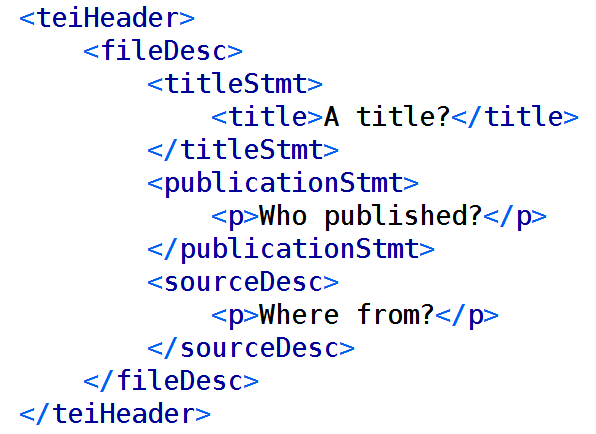
A Minimal Header
- fileDesc (with titleStmt & title), publicationStmt, and sourceDesc are all that are required
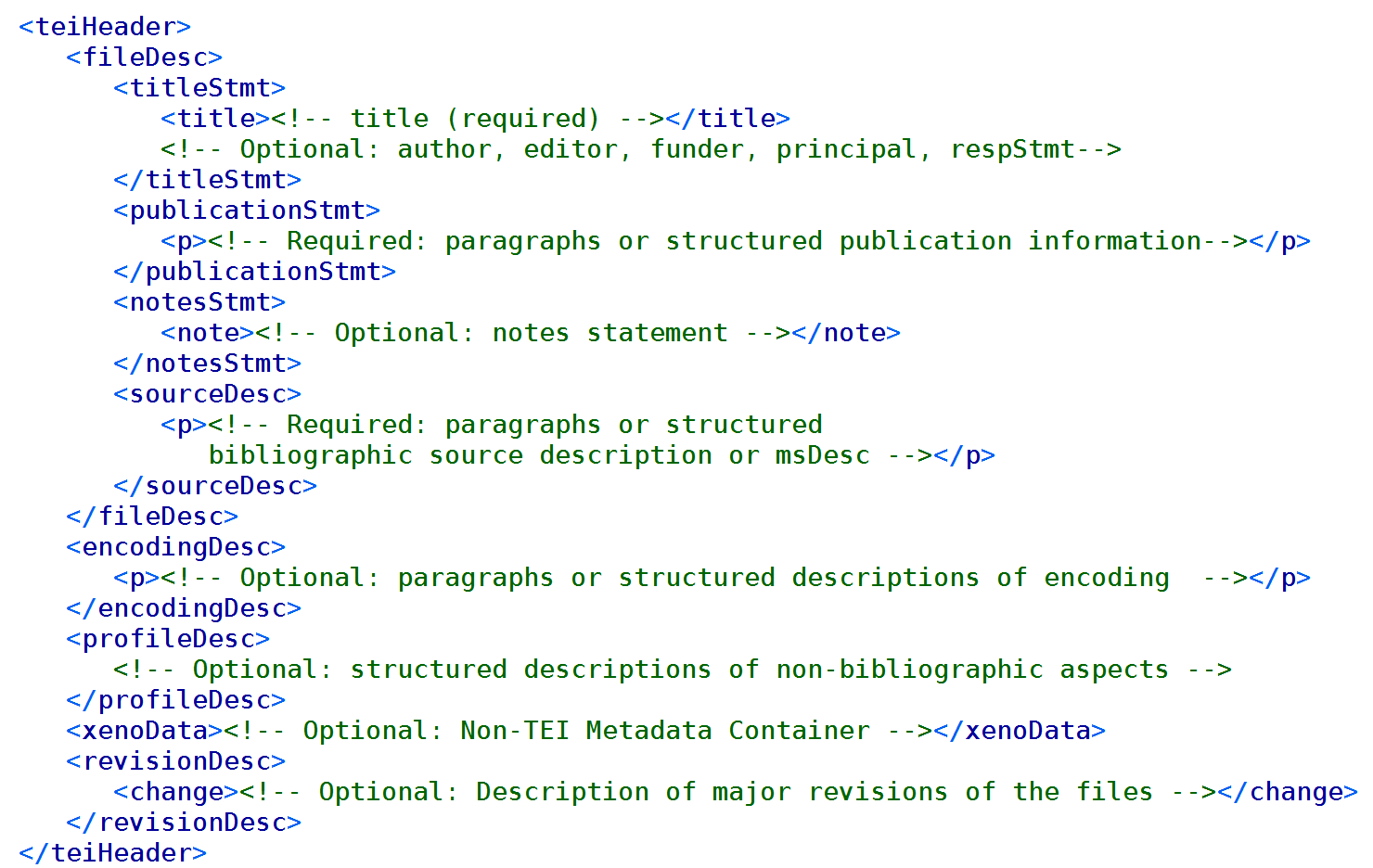
<teiHeader>: Required vs Optional Components

Example <titleStmt>s

Example <publicationStmt>
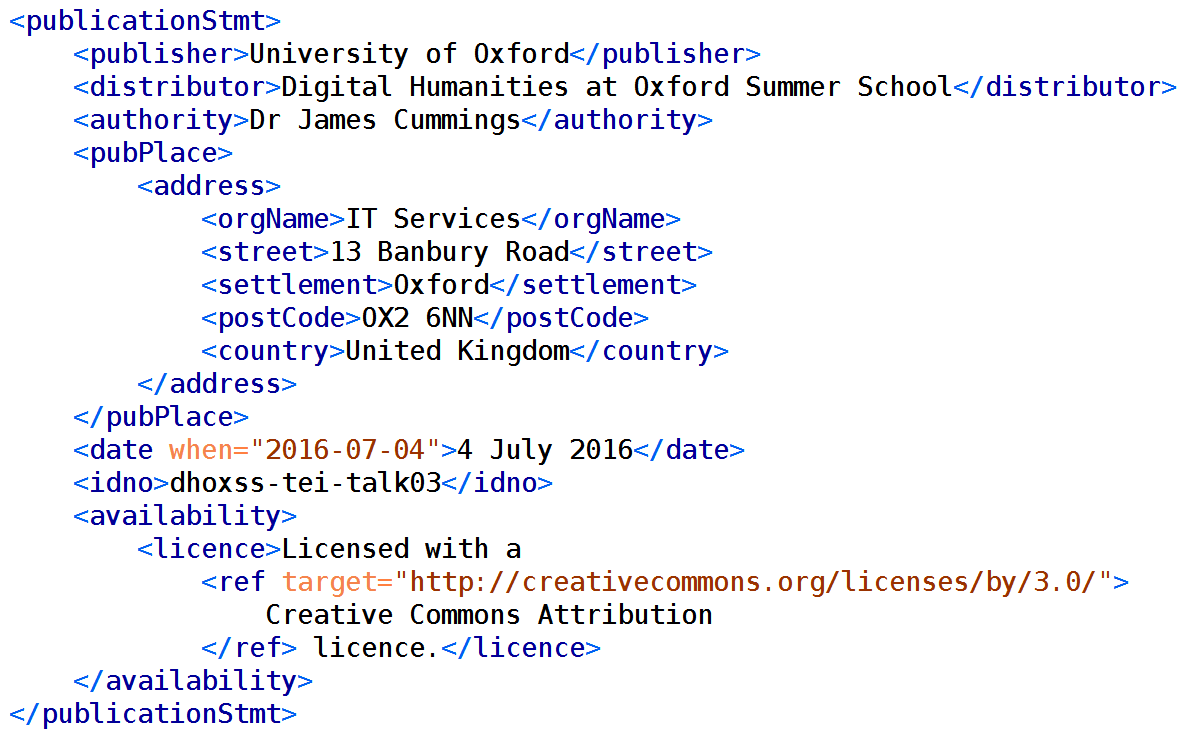
Example <sourceDesc>
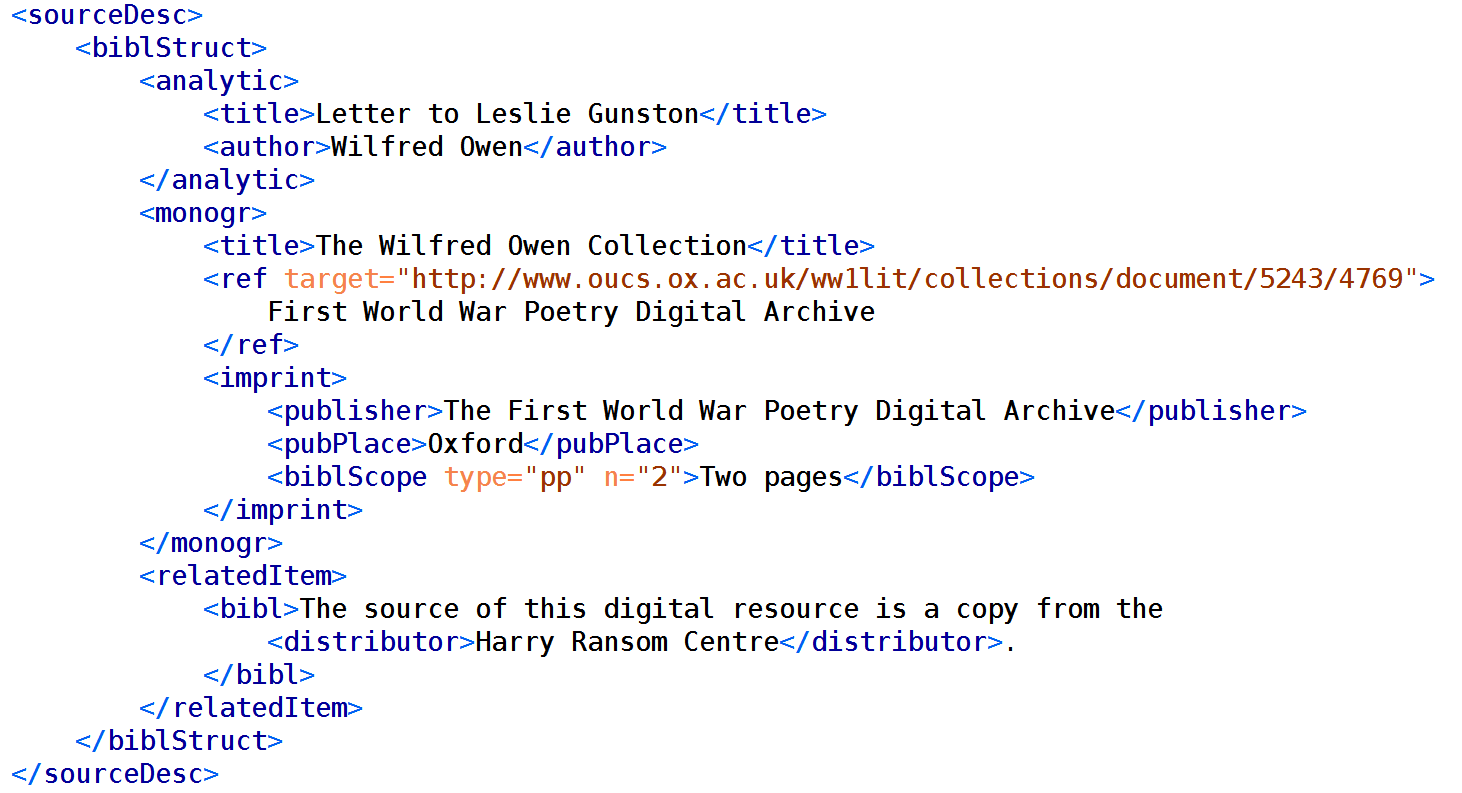
Or your <sourceDesc> could have one or more <msDesc> elements
Example <msDesc>
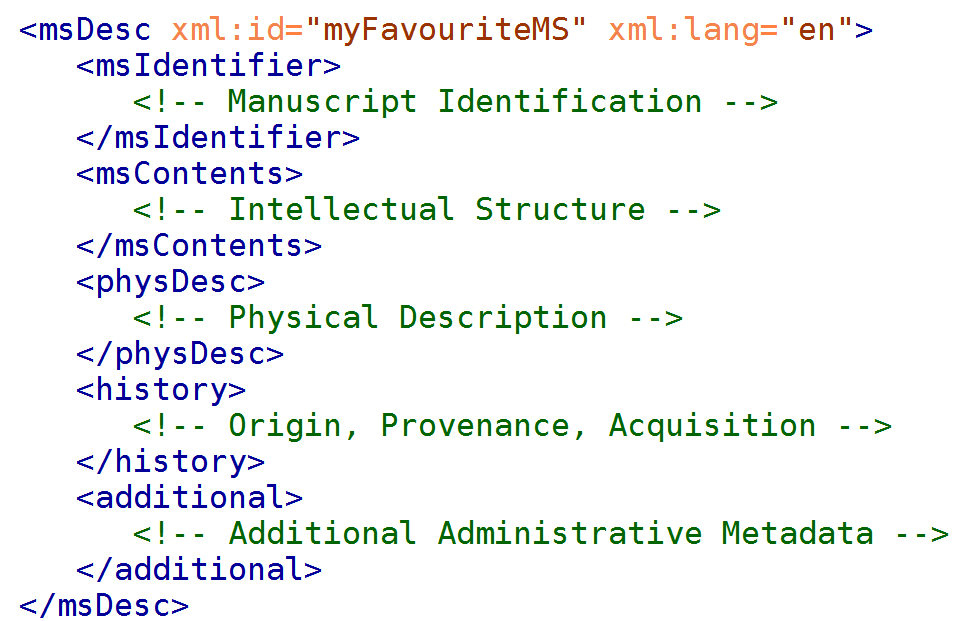


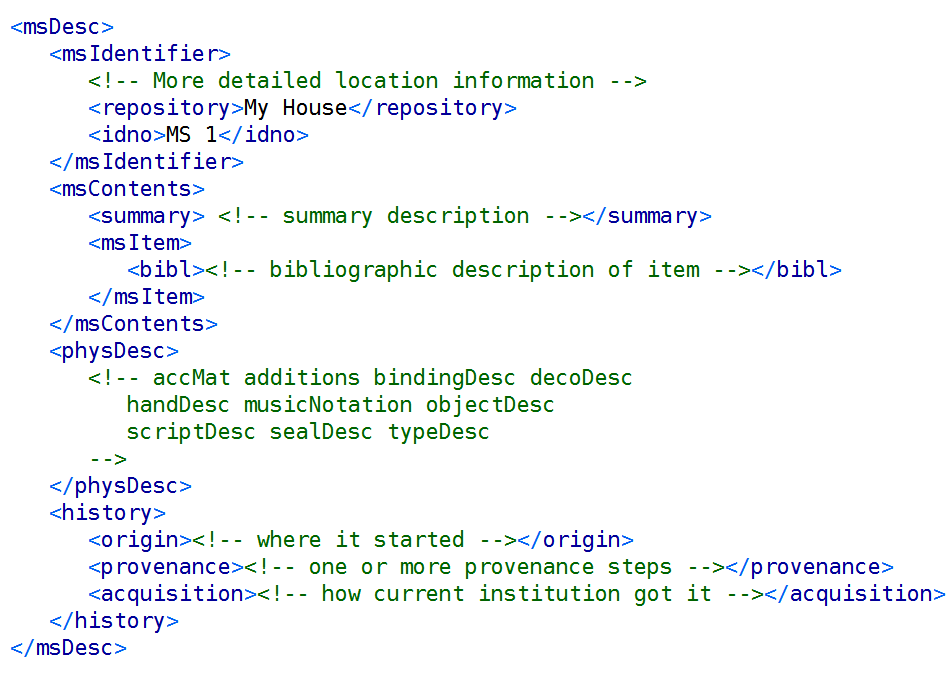

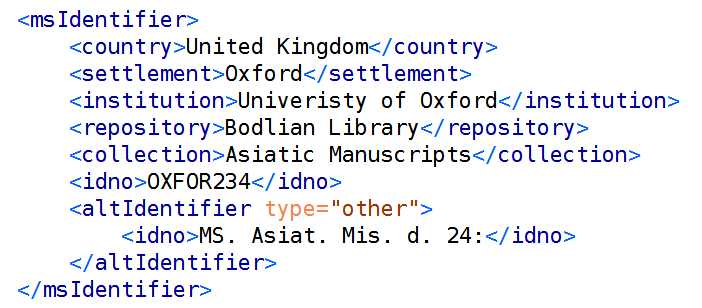
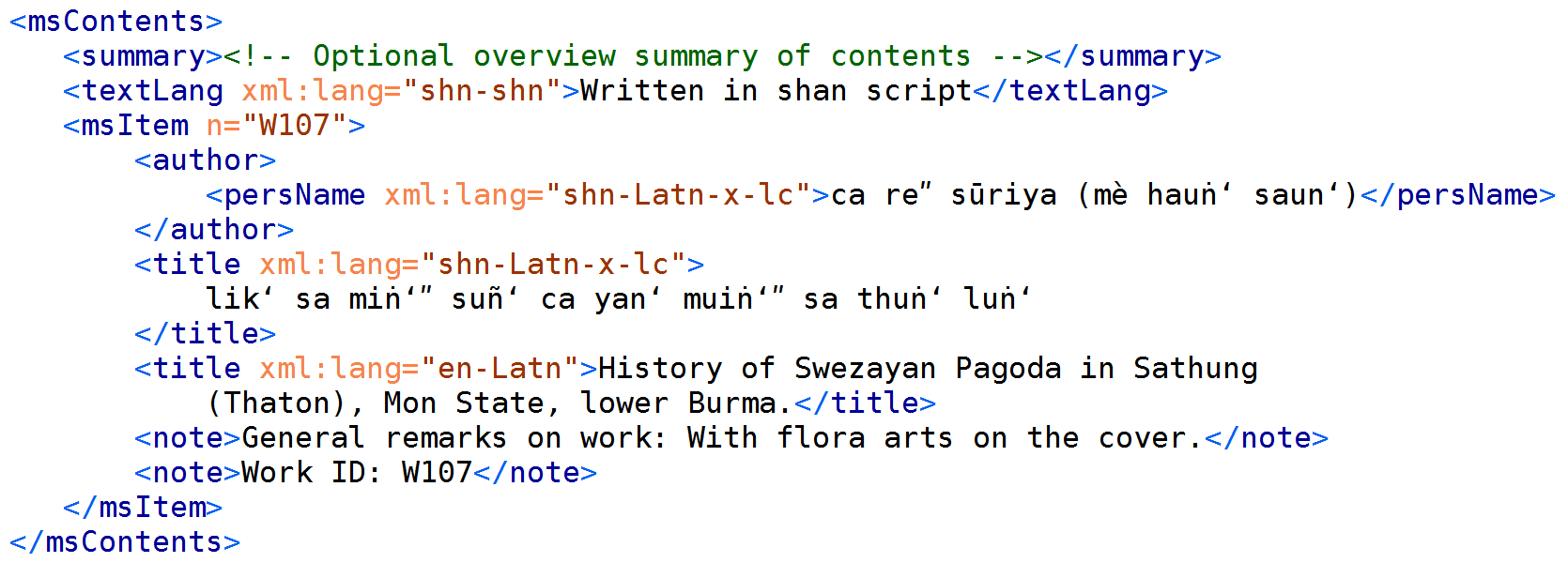
Example <msContents>
Example <physDesc>
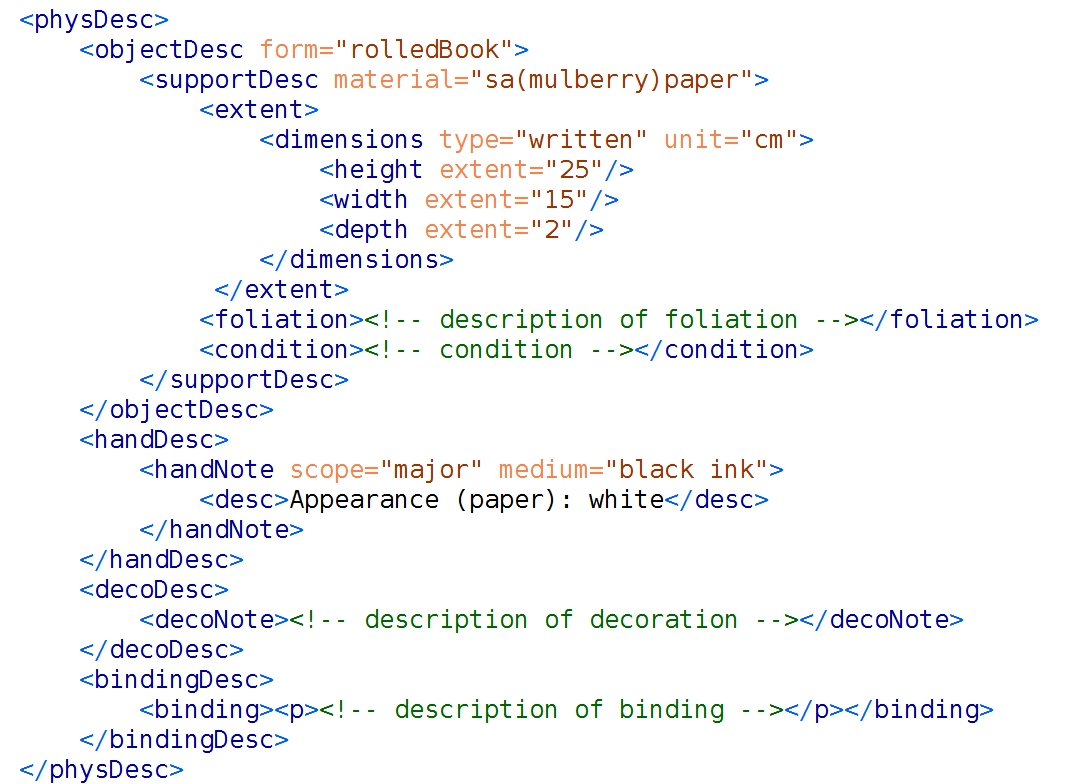
Example <history>

Other <msDesc> components
- <additional>: Containing <adminInfo> (e.g. custodial history) and <surrogates>
- <msPart>: to describe individual parts of a composite manuscript
- <msFrag>: to describe manuscript fragments as part of a virtual whole
TEI header module elements:
abstract appInfo application authority availability biblFull cRefPattern calendar calendarDesc
catDesc catRef category change classCode classDecl correction correspAction correspContext
correspDesc creation distributor edition editionStmt editorialDecl encodingDesc extent fileDesc
funder geoDecl handNote hyphenation idno interpretation keywords langUsage language
licence listChange listPrefixDef namespace normalization notesStmtprefixDef principal
profileDesc projectDesc publicationStmt punctuation quotation refState refsDecl rendition
revisionDesc samplingDecl scriptNote segmentation seriesStmt sourceDesc sponsor stdVals
styleDefDecl tagUsagetagsDecl taxonomy teiHeader textClass titleStmt typeNote xenoData
TEI manuscript description module elements:
accMat acquisition additional additions adminInfo altIdentifier binding bindingDesc catchword
collation collection colophon condition custEvent custodialHist decoDesc decoNote depth dim
dimensions explicit filiationfinalRubric foliation handDesc height heraldry history incipit
institution layout layoutDesc locus locusGrp material msContents msDesc msFrag msIdentifier
msItem msItemStruct msName msPart musicNotation objectDescobjectType origDate
origPlace origin physDesc provenance recordHist repository rubric scriptDesc seal sealDesc
secFol signatures source stamp summary support supportDesc surrogates typeDesc
watermark width